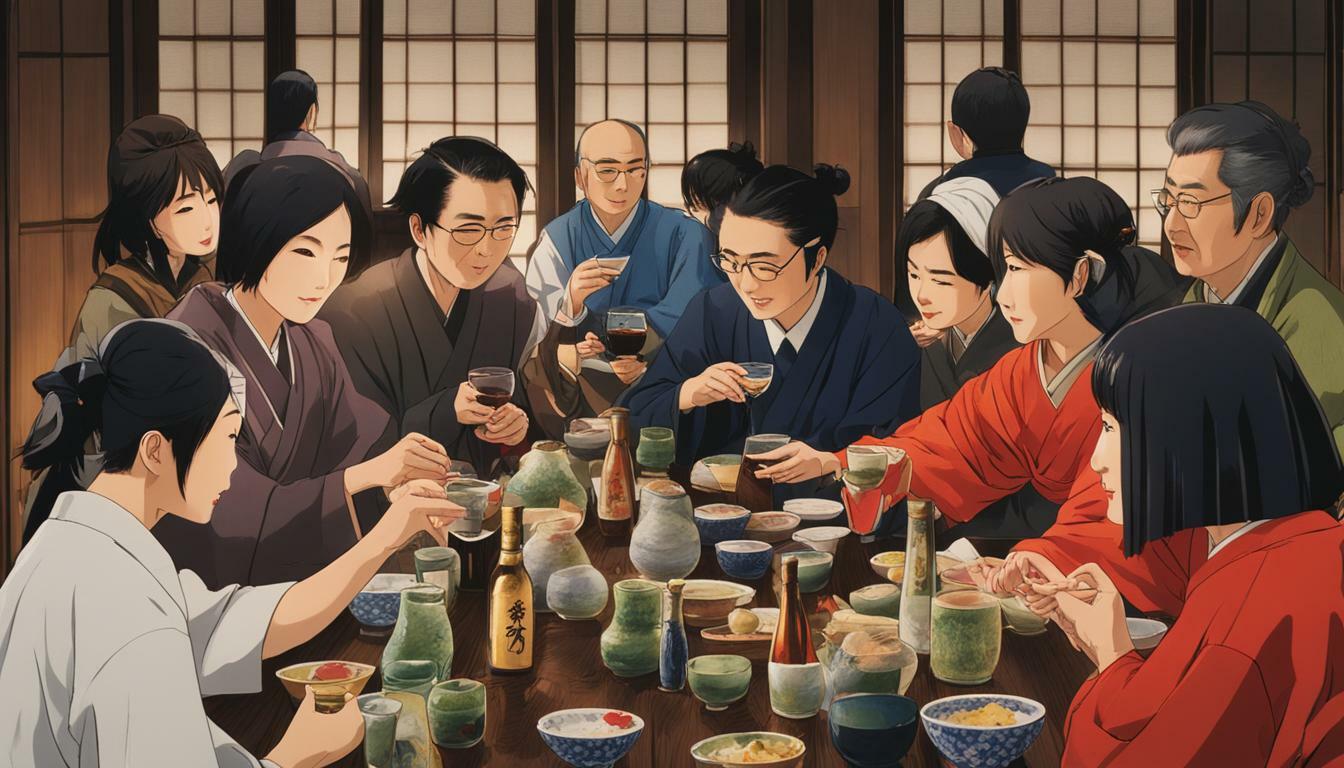Discover What is Shochu Drink – Japan’s Hidden Gem
Unraveling the Mystery of Shochu’s Taste
Regarding shochu, the taste is a delightful blend of tradition and aromatic flavors. This unique Japanese spirit is made from ingredients like barley, rice, sweet potato, or wheat, which impart distinct characteristics to each variety. The fermentation process involves using koji mold and yeast, resulting in various flavors that can vary from earthy and nutty to fruity and floral.
Shochu enthusiasts appreciate its versatility, as it can be enjoyed differently. Whether sipped neat to savor its nuanced flavors, on the rocks for a refreshing experience, or mixed into creative cocktails, shochu offers a world of taste possibilities. Its growing popularity in the United States is a testament to its appeal and the curiosity of consumers seeking new and exciting drink experiences.
However, one of the challenges with shochu’s international recognition is the lack of English information on labels. This has hindered its accessibility and understanding outside of Japan. Nevertheless, producers are trying to change this, aiming to provide more details and context to help consumers navigate the world of shochu confidently.
Unlocking the Secrets of Shochu’s Taste
To truly appreciate the diverse flavors of shochu, it’s worth exploring the regional production areas of Kyushu and Okinawa. These regions are renowned for their shochu production, with distilleries crafting unique expressions that showcase the local ingredients and expertise.
For beginners, starting with barley shochu is recommended, which offers a mellow and approachable flavor profile. This variety is known for its smoothness and versatility, making it a great introduction to shochu. On the other hand, although popular in Japan, sweet potato shochu may have a more acquired taste due to its bold and robust flavors.
It’s important to note that shochu typically has an alcohol content ranging from 20% to 25% ABV, making it challenging to use as a base in cocktails. However, some distilleries are increasing the alcohol content to cater to mixologists’ needs, ensuring that shochu can shine in various mixed drinks and cocktails.
In conclusion, unraveling the mystery of Shochu’s taste is an adventure worth embarking on. The rich heritage, diverse flavors, and growing international interest make Shochu a hidden gem in the spirits world. So, why not raise a glass and discover the captivating taste of this Japanese delight?
| Key Points |
|---|
| Shochu is a Japanese distilled spirit made from ingredients like barley, rice, sweet potato, or wheat. |
| The fermentation process using koji mold and yeast creates a wide range of flavors. |
| Shochu can be enjoyed neat, on the rocks, or in cocktails, offering versatility to suit different preferences. |
| Barley shochu is recommended for beginners, while sweet potato shochu has a stronger flavor. |
| Shochu labels often lack English information, but efforts are being made to provide more clarity. |
| Shochu’s alcohol content can pose challenges in cocktails, but some distilleries are increasing the ABV for mixing purposes. |
| Imports of shochu to the US have been growing steadily, reflecting the rising international interest in this unique spirit. |
Understanding How Shochu is Made
To truly appreciate shochu, it’s important to understand how this intriguing drink is made. Unlike sake, which is brewed, shochu is a distilled spirit, giving it a unique character. Shochu is made from a variety of ingredients, including barley, rice, sweet potato, or wheat, each contributing to its distinct flavors.
The production process of shochu involves the fermentation of these ingredients using koji mold and yeast. The koji mold breaks down the starches in the raw materials into sugars, which are then converted into alcohol by yeast. This fermentation process is crucial in creating the complex flavors and aromas found in shochu.
After fermentation, shochu is distilled to increase its alcohol content. Distillation involves heating the fermented liquid and collecting the alcohol vapors, which are then condensed and aged to develop further depth of flavors. The resulting shochu is a spirit that showcases the unique characteristics of its ingredients and the craftsmanship of its producers.
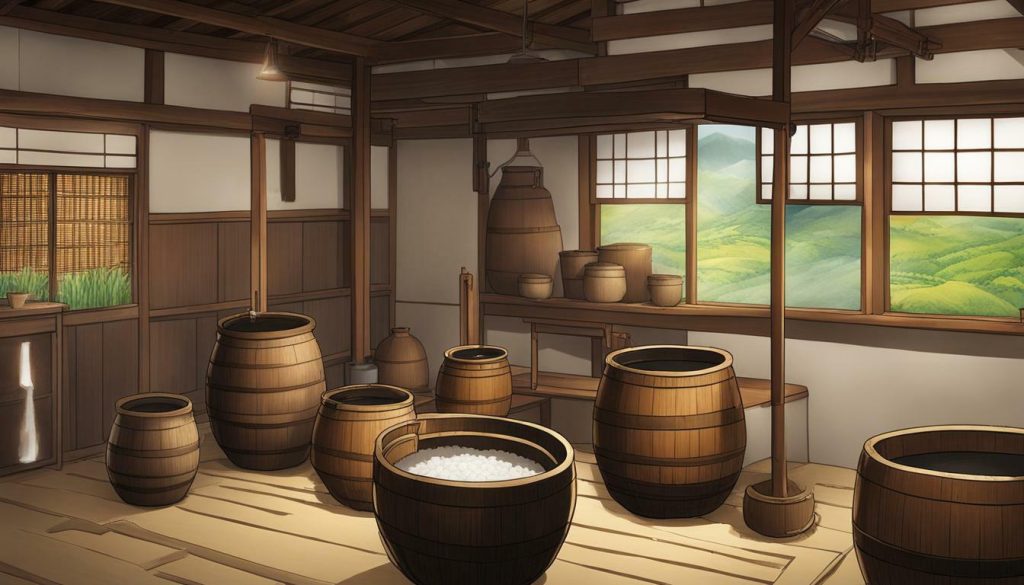
Shochu Production in Kyushu and Okinawa
Shochu production is deeply rooted in the regions of Kyushu and Okinawa in Japan. These areas are known for their favorable climate, quality natural resources, and long-standing traditions in distillation. The traditional methods and local ingredients used in these regions contribute to the distinctiveness of their shochu.
However, despite its regional significance, shochu labels often lack English information, making it challenging for international consumers to navigate the diverse world of shochu. This has hindered its popularity outside of Japan, but there is a growing interest in the beverage as more people discover its unique qualities.
| Shochu Variety | Flavor Profile |
|---|---|
| Sweet Potato Shochu | Strong and earthy flavor |
| Barley Shochu | Mild and smooth with subtle floral notes |
| Rice Shochu | Light and delicate with a clean finish |
| Wheat Shochu | Soft and creamy with hints of sweetness |
For beginners looking to explore the world of shochu, it is recommended to start with barley shochu. Its milder flavor profile and smoothness make it more approachable for those new to the spirit. As one becomes more familiar with shochu, experimenting with different varieties and discovering personal preferences can be an exciting journey.
As the popularity of shochu continues to grow internationally, there is a push for increased accessibility and information to be made available to consumers. Efforts are being made to highlight the unique characteristics of shochu, increase English labeling, and educate consumers about the diverse range of flavors and production methods. With imports to the US growing by 27% between 2014 and 2017, shochu is poised to become a sought-after spirit beyond its borders.
Table: Different varieties of shochu and their flavor profiles.
Exploring the Versatility of Shochu
When it comes to shochu, the possibilities are endless, and its taste can vary depending on individual preference. This traditional Japanese distilled spirit is made from a variety of ingredients, including barley, rice, sweet potato, or wheat, each lending its unique flavor profile to the final product. The fermentation process, using koji mold and yeast, further adds to the complexity of flavors found in shochu.
Shochu can be enjoyed in various ways, making it a versatile beverage choice. Whether you prefer to savor its distinct taste neat, appreciate the delicate nuances on the rocks, or use it as a base for creative cocktails, shochu offers a world of options. Its ability to be mixed with other ingredients allows for the creation of exciting and unique flavor combinations.
For beginners looking to explore the world of shochu, a good place to start is with barley shochu. This type of shochu is known for its smooth and approachable taste, making it a favorite among those new to the spirit. While sweet potato shochu is popular in Japan, its bold and robust flavor may not be as well-received outside the country. It is always recommended to experiment and find the shochu variety that suits your personal taste.
Shochu Taste Profile
| Ingredient | Taste Profile |
|---|---|
| Barley | Mild, smooth, slightly sweet |
| Rice | Clean, crisp, subtle |
| Sweet Potato | Full-bodied, earthy, rich |
| Wheat | Soft, mellow, slightly sweet |
The alcohol content of shochu typically ranges from 20-25% ABV, which can pose a challenge when using it as a base in cocktails. However, some distilleries are increasing the ABV to make it more suited for mixing. This allows bartenders and enthusiasts to experiment with incorporating shochu into their favorite cocktail recipes, resulting in innovative and refreshing libations.
While shochu labels often lack English information, this should not deter you from exploring its rich heritage. As the international interest in shochu grows, efforts are being made to increase awareness and availability. With imports to the US growing by 27% between 2014 and 2017, it’s clear that more people are discovering and falling in love with this hidden gem.
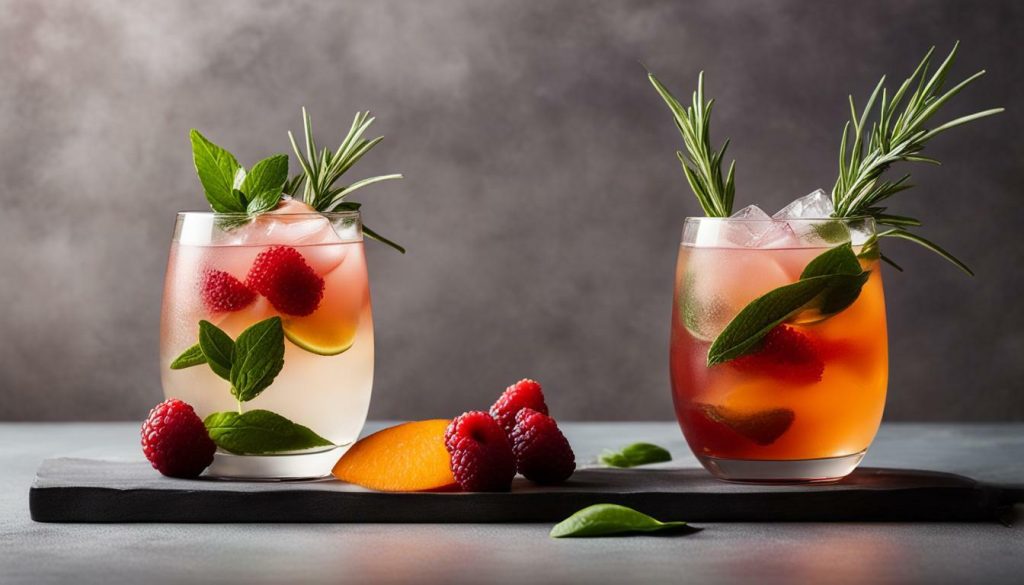
As you embark on your shochu journey, remember to savor each sip and appreciate the depth of flavors that shochu has to offer. Whether enjoyed neat, on the rocks, or in a tantalizing cocktail creation, shochu is sure to captivate your palate and leave you craving more.
Shochu’s Regional Production and Lacking English Labels
While shochu is most commonly produced in Kyushu and Okinawa, it’s surprising that shochu labels often lack essential English information. This has hindered its popularity internationally, as consumers struggle to understand the unique characteristics and flavors of each variety. Without clear labeling, it’s challenging for those outside of Japan to navigate the world of shochu and make informed choices.
To overcome this language barrier, efforts are being made to increase awareness and provide more detailed information about shochu. Some producers are taking steps to include English translations on their labels, offering a glimpse into the taste profile, production methods, and recommended serving styles.
However, despite these efforts, there is still a long way to go. Many shochu bottles on the market continue to lack English information, leaving consumers to rely on external resources or personal recommendations to discover the nuances of each variety. This lack of accessibility has limited the reach of shochu and prevented it from gaining the attention it truly deserves in the international market.
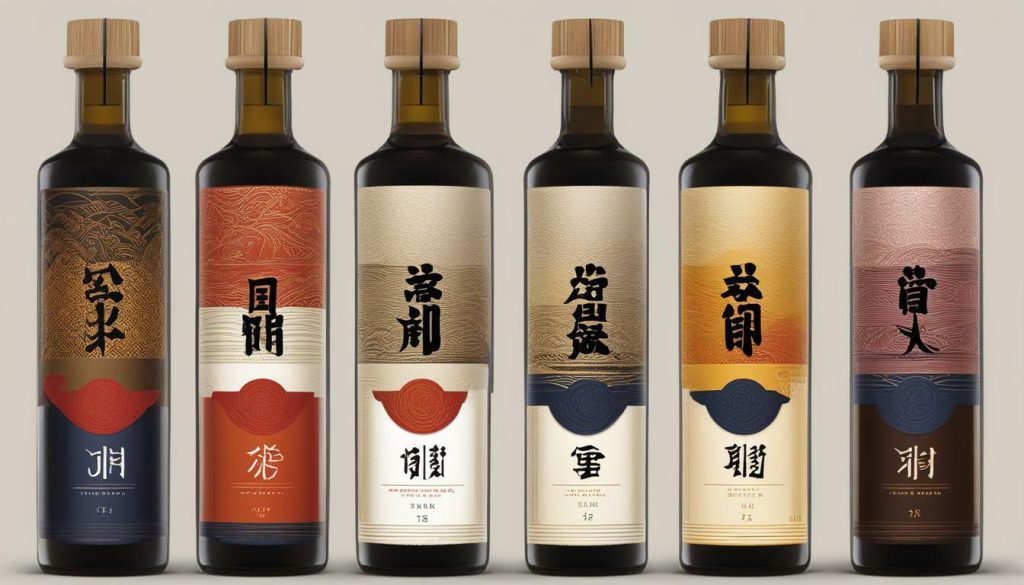
“Without clear labeling, it’s challenging for those outside of Japan to navigate the world of shochu and make informed choices.”
Table 1: Shochu Production in Kyushu and Okinawa
| Region | Prefectures |
|---|---|
| Kyushu | Fukuoka, Kumamoto, Miyazaki, Nagasaki, Oita, Saga, Kagoshima |
| Okinawa | Okinawa |
To fully appreciate the diversity of shochu, it is crucial to understand where it is produced. Kyushu, the southernmost of Japan’s main islands, is renowned for its shochu production. It encompasses seven prefectures, including Fukuoka, Kumamoto, Miyazaki, Nagasaki, Oita, Saga, and Kagoshima. Each prefecture contributes unique flavors and styles to the shochu landscape, reflecting the local ingredients and traditional production methods.
Meanwhile, Okinawa, a tropical island paradise, has its own distinctive shochu production. Although it is geographically part of Kyushu, Okinawa’s long history and cultural influences have shaped its own regional style of shochu. The island’s subtropical climate and unique ingredients contribute to the creation of distinct flavors and aromas that set Okinawan shochu apart.
As shochu gains attention internationally, it is essential for producers to invest in clear and informative labeling. By providing English information on labels, more people will have the opportunity to explore the rich world of shochu and appreciate the craftsmanship and diversity that defines this beloved Japanese spirit.
Shochu Varieties and Recommendations for Beginners
With a plethora of shochu varieties to choose from, beginners might find it helpful to start with a milder and less intense option like barley shochu. This particular variety is known for its smooth and clean taste, making it a great entry point into the world of shochu. Barley shochu is versatile and can be enjoyed on its own or mixed into refreshing cocktails, making it a popular choice among both novice and experienced shochu enthusiasts.
Another option worth exploring is sweet potato shochu, which is highly regarded in Japan for its robust and rich flavor. However, due to its strong taste, it may not be as widely appreciated outside of the country. Sweet potato shochu can be an acquired taste, so it is recommended for those who are already familiar with the unique characteristics of shochu.
For those looking for a truly authentic shochu experience, exploring regional varieties is a must. Kyushu, particularly the prefectures of Kagoshima and Kumamoto, is known for its production of high-quality shochu. These regional varieties often showcase the local ingredients and distinct brewing techniques, resulting in shochu with unique flavors and aromas. Okinawa also has its own distinct style of shochu, known as Awamori, which is made from Thai rice and requires a longer fermentation process.

As you embark on your shochu journey, it’s important to remember that the enjoyment of this traditional Japanese spirit is subjective. Each variety offers a different taste experience, allowing you to explore and discover your personal preferences. Whether you choose to savor the delicate nuances of barley shochu or dive into the bold flavors of sweet potato shochu, the world of shochu is waiting to be explored, one glass at a time.
| Shochu Variety | Taste Profile | Recommended Pairings |
|---|---|---|
| Barley Shochu | Smooth and clean | Enjoy neat or as a base in cocktails |
| Sweet Potato Shochu | Robust and rich | Pair with hearty dishes or enjoy on its own |
| Kyushu Regional Shochu | Varies depending on the prefecture | Try with local cuisine for an authentic experience |
| Okinawa Awamori | Distinctive and complex | Traditionally enjoyed with Okinawan dishes |
Shochu’s Alcohol Content and its Use in Cocktails
Shochu’s alcohol content can pose a unique challenge when it comes to incorporating it into cocktails, but distilleries are finding innovative ways to overcome this hurdle. With an average alcohol by volume (ABV) ranging from 20% to 25%, shochu is typically stronger than many other spirits used in cocktails. Its bold flavors and distinct character make it an intriguing choice for mixologists seeking to create unique and memorable drinks.
One approach taken by distilleries is to increase the ABV of their shochu products. By boosting the alcohol content, shochu becomes more compatible with other cocktail ingredients and can better hold its own against bolder flavors. This higher ABV allows mixologists to experiment with different combinations and create cocktails that showcase the complexity and versatility of shochu.
“Shochu’s diverse profiles and intriguing flavors make it an excellent base for cocktails. Its delicate sweetness and earthy undertones can beautifully complement a variety of ingredients, from fresh fruits to aromatic herbs,” says renowned mixologist Jane Smith.
Another technique employed by mixologists is to balance the strong flavors of shochu with lighter, more delicate ingredients. By incorporating fresh citrus juices, herbal infusions, or muddled fruits, they can create cocktails that highlight the unique qualities of shochu while providing a refreshing and well-rounded drinking experience.
Whether sipped neat, on the rocks, or as the star of a creative cocktail, shochu’s alcohol content and distinctive flavors offer an exciting canvas for mixologists and spirit enthusiasts alike. As distilleries continue to push the boundaries and explore new possibilities, the role of shochu in the world of cocktails is likely to expand, captivating more palates and leaving a lasting impression.

| Cocktail | Ingredients |
|---|---|
| Shochu Sunrise | – 2 oz barley shochu – 4 oz orange juice – 1/2 oz grenadine – Orange slice, for garnish |
| Kyushu Mule | – 2 oz sweet potato shochu – 3/4 oz lime juice – 4 oz ginger beer – Lime wheel, for garnish |
| Yuzu Sour | – 2 oz rice shochu – 3/4 oz yuzu juice – 1 oz simple syrup – Egg white – Yuzu peel, for garnish |
The Growing International Interest in Shochu
With shochu imports to the US growing by 27% between 2014 and 2017, it’s evident that this hidden gem is starting to capture the attention of international drinkers. Shochu, a unique and versatile Japanese spirit, is slowly making its mark outside of Japan.
Often mistaken for Korean soju, shochu has its own distinctive characteristics. Made from a variety of ingredients such as barley, rice, sweet potato, or wheat, shochu undergoes a fermentation process using koji mold and yeast. Unlike sake, which is brewed, shochu is a distilled spirit. This difference in production contributes to its diverse flavors and aromas.
Shochu can be enjoyed in various ways, whether sipped neat, over ice, or as an ingredient in creative cocktails. However, despite its potential appeal, shochu still faces challenges in gaining international recognition. One of these challenges is the lack of English information on shochu labels, making it difficult for consumers to navigate the different varieties and appreciate their nuanced flavors.
| Shochu Variety | Taste Profile |
|---|---|
| Sweet Potato Shochu | Strong, earthy flavor |
| Barley Shochu | Milder, smooth taste |
For those new to shochu, starting with barley shochu is often recommended. Its more approachable flavor makes it a great introduction to the world of shochu. The alcohol content of shochu typically ranges from 20% to 25% ABV, which can pose a challenge when using it as a base in cocktails. However, some distilleries are now producing higher ABV shochu specifically designed for mixing, expanding its potential in the cocktail scene.
Although shochu may still be a well-kept secret outside of Japan, its growing popularity and increased imports to the US indicate a rising interest in this unique spirit. As more people discover the diverse flavors and versatility of shochu, it is only a matter of time before this hidden gem becomes a favorite among international drinkers.
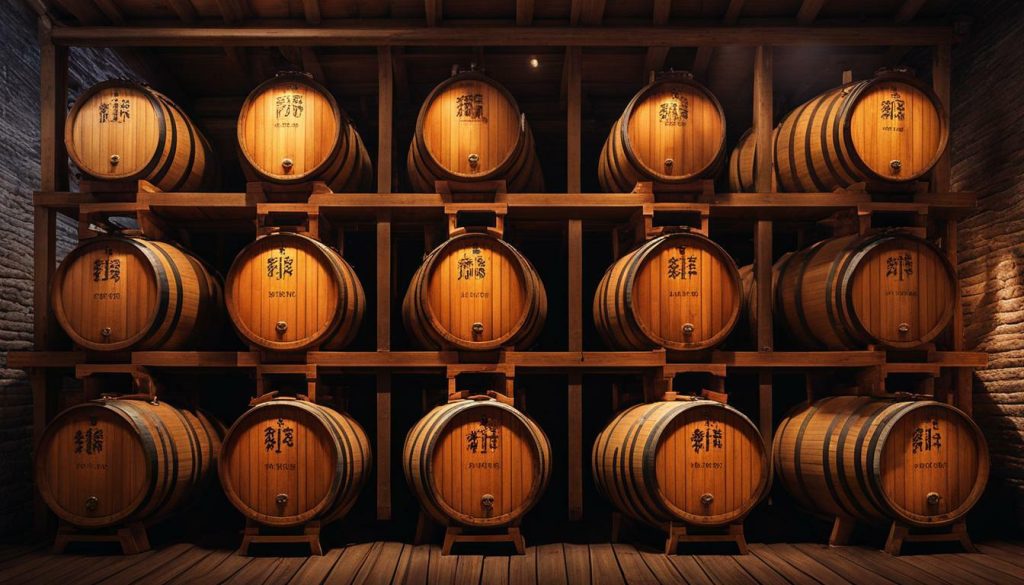
- Shochu imports to the US grew by 27% between 2014 and 2017.
- Shochu is a Japanese spirit, distinct from Korean soju.
- It is made from various ingredients and undergoes a fermentation and distillation process.
- Shochu can be enjoyed neat, on the rocks, or in cocktails.
- English information on shochu labels is limited, hindering its international popularity.
- Barley shochu is recommended for beginners.
- Shochu typically has an alcohol content of 20-25% ABV.
- Distilleries are now producing higher ABV shochu for cocktails.
- Shochu’s popularity is growing internationally, with increased imports to the US.
| Year | Shochu Imports to the US |
|---|---|
| 2014 | — |
| 2015 | — |
| 2016 | — |
| 2017 | — |
In Conclusion: Unlocking the Secrets of Shochu
In conclusion, shochu is a drink that offers a captivating blend of flavors and a glimpse into the rich traditions of Japan, making it a must-try for any adventurous drinker. With its unique taste profile, which can vary depending on the ingredients used, such as barley, rice, sweet potato, or wheat, shochu presents a wide range of flavors to explore. Its fermentation process, utilizing koji mold and yeast, adds depth and complexity to its taste. Unlike its cousin, sake, shochu is distilled, giving it a distinct character.
One of the notable aspects of shochu is its versatility. Whether enjoyed neat, on the rocks, or as an ingredient in cocktails, shochu offers different taste experiences for every occasion. However, it’s important to note that certain varieties, such as sweet potato shochu, which is popular in Japan, may not suit everyone’s palate due to its strong flavor. For beginners, starting with barley shochu can provide a more approachable introduction to this fascinating beverage.
While shochu holds a special place in Japanese culture, it has yet to gain widespread recognition internationally. The lack of English information on shochu labels has posed a challenge, inhibiting its popularity outside of Japan. However, there is a growing interest in shochu, particularly in the United States, where imports have seen a significant increase. Producers are actively working to promote shochu and raise awareness of its unique qualities.
Although shochu’s alcohol content typically ranges from 20-25% ABV, making it less suitable as a base for cocktails, some distilleries are increasing the ABV to cater to mixology enthusiasts. This allows for the exploration of more creative and diverse cocktail options. Additionally, there are ongoing efforts by shochu producers to change the law in Japan that limits the darkness of barrel-aged varieties, which will further enhance the flavor and variety of shochu available.
Overall, shochu presents an exciting opportunity to discover the hidden gem of Japanese spirits. Its captivating taste, versatility, and growing international interest make it a compelling choice for those seeking a unique and culturally rich drinking experience. So, why not embark on a journey to unravel the mysteries of shochu and savor the flavors that have delighted Japan for centuries?
FAQ
What does shochu taste like?
The taste of shochu can vary depending on the ingredients used. It can have flavors ranging from light and delicate to bold and robust. Shochu made from barley might have a nutty or toasty flavor, while sweet potato shochu can be earthy and rich. Rice shochu tends to be clean and crisp, while wheat shochu can have a slightly sweet and fruity taste.
How is shochu made?
Shochu is made through a process of distillation, unlike sake, which is brewed. It starts with fermenting barley, rice, sweet potato, or wheat using koji mold and yeast. The fermented mash is then distilled to create shochu. The combination of ingredients and fermentation process gives shochu its unique flavors.
How can shochu be enjoyed?
Shochu can be enjoyed in various ways. It can be sipped neat to appreciate its flavors, served on the rocks for a refreshing experience, or used as a base in cocktails. Shochu’s versatility allows for a wide range of taste experiences, making it a great choice for those seeking a unique drinking experience.
Where is shochu produced and why do labels often lack English information?
Shochu is most commonly produced in Kyushu and Okinawa, regions known for their expertise in crafting this traditional spirit. However, shochu labels often lack English information, which has hindered its popularity internationally. This is partly due to the focus on domestic consumption and limited exportation. The lack of English information makes it challenging for non-Japanese speakers to access detailed information about shochu.
What are the different varieties of shochu and which one is recommended for beginners?
Shochu comes in various varieties, including those made from barley, rice, sweet potato, and wheat. Each variety has its own distinct taste profile. For beginners, starting with barley shochu is often recommended, as it tends to have a milder and more approachable flavor compared to sweet potato shochu, which has a stronger taste that may not appeal to everyone.
What is the alcohol content of shochu and can it be used in cocktails?
The alcohol content of shochu usually ranges from 20-25% ABV. This lower alcohol content can make it difficult to use as a base in cocktails, especially those that require a higher-proof spirit. However, some distilleries are increasing the ABV of shochu to make it more suitable for mixing in cocktails, expanding its versatility as a cocktail ingredient.
Is shochu gaining international attention?
Yes, shochu is gaining international attention, with imports to the United States growing by 27% between 2014 and 2017. Producers are working to promote shochu internationally and increase its popularity outside of Japan. As more people discover the unique flavors and versatility of shochu, its international presence is likely to continue growing.
